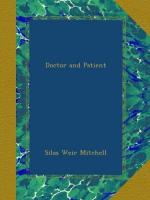All these details you teach her and more, and paddle home with a mental cargo of fresh joys and delicious memories. My young friend is intelligent and clever, but she has never learned to observe. If she wants to know how, there is a book will help her. Let her take with her Ruskin’s “Modern Painters.” It will teach her much, not all. Nor do I know of any other volume which will tell her more.[13] Despite its faults, it has so many lessons in the modes of minute study of outside nature that it becomes a valuable friend. Although ostensibly written to aid artistic criticism, it does far more than this and yet not all. Other books which might seem desirable are less so because they are still more distinctly meant to teach or assist artists or amateurs. What is yet wanted is a little treatise on the methods of observing exterior nature. Above all it should be adapted to our own woods, skies, and waters. What to look for as a matter of pleasure, and how to see and record it, is a thing apart from such observation as leads to classification, and is scientific in its aims. It is somewhat remote also from the artist’s study, which is a more complex business, and tends to learn what can be rendered by pencil or brush and what cannot. Its object at first is merely to give intelligent joy to the senses, to cultivate them into acuteness, and to impress on the mind such records as they ought to give us at their best.
[Footnote 13: “Frondes Agrestes,” Ruskin, is a more handy book than “Modern Painters,” but is only selections from the greater volumes recommended. “Deucalion” is yet harder reading, but will repay the careful reader.]
Presuming the pupil to be like myself, powerless to use the pencil, she is to learn how to put on paper in words what she sees. The result will be what I may call word-sketches. Observe these are not to be for other eyes. They make her diary of things seen and worthy of note. Neither are they to be efforts to give elaborate descriptions. In the hands of a master, such use of words makes a picture in which often he sacrifices something, as the artist does, to get something else, and strives




